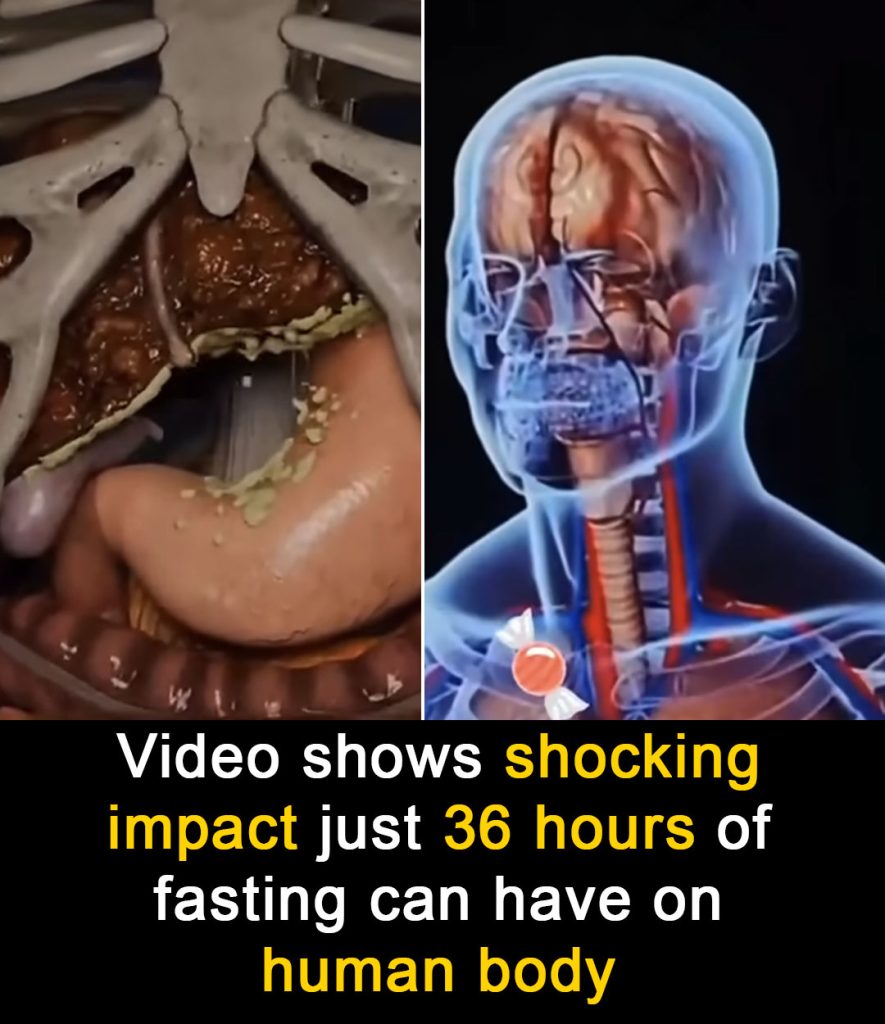The human body is truly remarkable. It constantly adapts, evolves, and responds to the choices we make—especially when it comes to food. One of the most intriguing phenomena in health and wellness today is the act of fasting, particularly long-term fasting. While some people may see it as a health trend, others use it for religious or cultural reasons. But no matter the reason, fasting has drawn attention for its dramatic impact on our bodies—and it might be more powerful than most people think.

A recent simulation explored exactly what happens to the human body during a 36-hour fast. By breaking down the process into four-hour increments, it offers an eye-opening look into the complex and sometimes surprising reactions your body undergoes when food and drink are withheld. The findings are far from simple hunger pangs—what unfolds is a profound transformation that can bring both potential health benefits and certain risks.
In the first four hours after your last meal, your body is still digesting. This is a continuation of the absorptive phase where glucose from food is used for energy. However, once digestion ends, your body enters what’s known as the catabolic phase. During this time, your body begins breaking down stored energy. According to Dr. Robert Kiltz, this process is marked by the conversion of larger molecules like glycogen and fat into smaller molecules that can fuel your cells. Essentially, your body flips a switch and starts depending on what it already has in storage.
After eight hours, glucose levels begin to drop. Your body starts tapping into glycogen reserves stored in your liver and muscles to maintain energy levels. Glycogen is your body’s backup battery—it’s easily accessible, but the supply is limited. Since no new food is coming in to refill those stores, your body naturally transitions to using what’s already available.
Twelve hours in, things start to shift dramatically. At this point, your glycogen stores are running low, prompting your liver to start breaking down fats into ketones—an alternative fuel source. This metabolic change, often referred to as “metabolic switching,” is key for those trying to lose weight. The body transitions from a glucose-based energy system to one that relies on fat. This switch is essential in many intermittent fasting protocols and is one of the primary reasons people see weight loss benefits when they fast.
By hour sixteen, autophagy kicks in. This is a biological housekeeping process where your cells begin to clean themselves out—breaking down and recycling damaged parts to make new, healthy components. The Cleveland Clinic notes that autophagy is not just helpful; it’s necessary. It can protect against diseases, promote longevity, and improve overall cellular function. Think of it as your body’s internal maintenance system going to work, clearing out the clutter.
At the 24-hour mark, even more significant cellular repair begins. Your body is now in full fat-burning mode, deeply engaged in reducing inflammation and improving insulin sensitivity. This is when some of the long-term health benefits associated with fasting may begin to take root. The body isn’t just surviving without food—it’s optimizing. Hormonal levels shift, stress resistance increases, and internal systems recalibrate for efficiency.
As you move toward 30 hours, growth hormone levels surge. This is vital for maintaining muscle mass and supporting recovery. According to the video breakdown, this is where the concept of “deep healing” becomes relevant. The body, now free from the constant task of digestion, redirects energy to repair, regeneration, and protection. These processes may help prevent chronic illnesses or even contribute to reversing certain health conditions over time.
By the time you reach 36 hours, your body is believed to reach peak autophagy. This means cellular cleanup is at its highest, tissues begin regenerating, and your metabolism may get a powerful boost. Essentially, the body has hit the reset button—burning fat, fixing cells, and recalibrating hormonal balances in a way that rarely happens in a constantly fed state.
Fasting beyond 36 hours can continue to provide these effects up to around 72 hours, according to some researchers. However, it’s critical to note that while the body can adapt to longer fasts, they must be approached with caution. The benefits might sound compelling, but fasting is not a one-size-fits-all solution.
There’s still debate in the scientific community about just how beneficial extended fasting truly is. James Betts, a professor of metabolic physiology, explains that while there are many proposed benefits of fat-based energy systems, the evidence in human studies is still limited. “A lot of the research hasn’t really been borne out in human beings. So we don’t see dramatic health benefits, certainly in the short term,” he noted during an interview. This skepticism underscores the importance of balanced, evidence-based perspectives when considering extreme dietary changes.
Moreover, fasting isn’t without its drawbacks. A study reported by News In Health revealed that individuals who fast for 16 hours or more daily may face an increased risk of gallstones. These painful deposits in the gallbladder can lead to serious digestive issues and even require surgery. Other potential side effects include extreme hunger, fatigue, irritability, food obsession, and digestive discomfort. Some people also report mood swings or difficulty concentrating, especially in the early stages of fasting.
Every individual responds differently to fasting. Some may feel energized, mentally clear, and physically lighter. Others might struggle with low energy, brain fog, or intense cravings. That’s why it’s essential to approach fasting with self-awareness and a sense of caution. More importantly, consulting a healthcare provider before starting any extended fast is strongly recommended—especially if you have underlying health conditions, are pregnant, or take medication that affects blood sugar or metabolism.
In the end, fasting is a deeply personal journey. For some, it’s a powerful tool for healing and self-discipline. For others, it might be more trouble than it’s worth. But one thing is certain: understanding what really happens inside your body during a fast gives you the power to make more informed decisions about your health. Whether you fast for clarity, weight loss, or spiritual growth, knowing the biological timeline behind those 36 hours offers insights that can guide your path forward.





